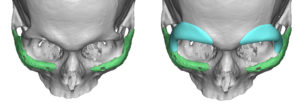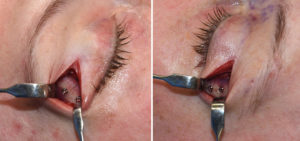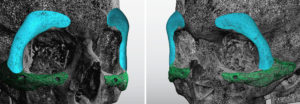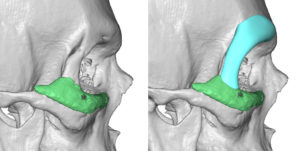Background: The presence and size of the brow bone is an important male facial feature. Having a visible brow bone as defined by the presence of a brow bone break into the forehead above it is an upper facial feature that separates most men from women. One can debate about what size this visible brow bone should be but that is a subjective assessment that will vary by the individual male.
The typical weak or inadequate brow bone projection in men is that of a horizontal deficiency. This lack of forward projection encompasses the entire supraorbital rim and typically goes down to the fronto-zygomatic suture line. While such a deficiency represents lack of adequate pneumatization or development of the frontal sinuses that many men have, it is important to recognize that the frontal sinus occupies only the medial or inner half of the brow bones. The lateral or outer half (the brow bones can be divided into inner and out halves by a vertical line draw upward from the pupil of the eye) is a reflection of the skull’s development. This is why most male brow bones are more prominent centrally than laterally.
A less common form of male brow bone deficiency is that of the lateral brow area only. In these patients the frontal sinus part of the brow bone or inner half of the brow bones is of adequate development and projection. But starting at the end of the frontal sinuses all the way around the lateral orbital rim down to the zygoma it is too narrow or ‘pinched’. This is almost always associated with an overall narrow head shape with decreased forehead and bitemporal width.



Case Highlights:
1) Traditional male brow bone augmentation is done along the supraorbital ridge.
2) Lateral brow bone augmentation consists of the non-frontal sinus part of the supraorbital ridge and the lateral orbital rim.
3) Custom lateral brow bone implants can be placed through limited upper eyelid incisions.
Dr. Barry Eppley
Indianapolis, Indiana






